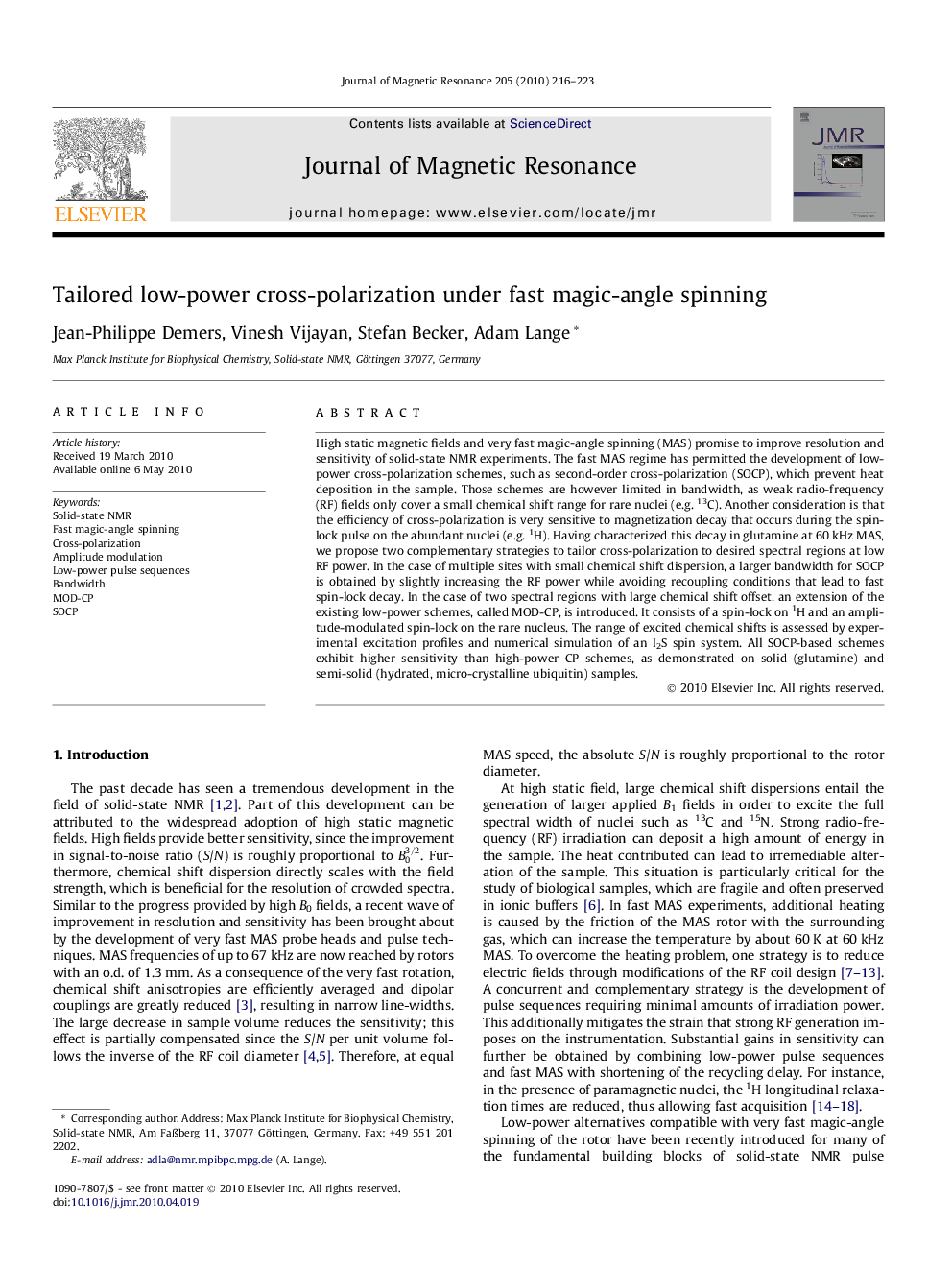| Article ID | Journal | Published Year | Pages | File Type |
|---|---|---|---|---|
| 5406754 | Journal of Magnetic Resonance | 2010 | 8 Pages |
Abstract
High static magnetic fields and very fast magic-angle spinning (MAS) promise to improve resolution and sensitivity of solid-state NMR experiments. The fast MAS regime has permitted the development of low-power cross-polarization schemes, such as second-order cross-polarization (SOCP), which prevent heat deposition in the sample. Those schemes are however limited in bandwidth, as weak radio-frequency (RF) fields only cover a small chemical shift range for rare nuclei (e.g. 13C). Another consideration is that the efficiency of cross-polarization is very sensitive to magnetization decay that occurs during the spin-lock pulse on the abundant nuclei (e.g. 1H). Having characterized this decay in glutamine at 60Â kHz MAS, we propose two complementary strategies to tailor cross-polarization to desired spectral regions at low RF power. In the case of multiple sites with small chemical shift dispersion, a larger bandwidth for SOCP is obtained by slightly increasing the RF power while avoiding recoupling conditions that lead to fast spin-lock decay. In the case of two spectral regions with large chemical shift offset, an extension of the existing low-power schemes, called MOD-CP, is introduced. It consists of a spin-lock on 1H and an amplitude-modulated spin-lock on the rare nucleus. The range of excited chemical shifts is assessed by experimental excitation profiles and numerical simulation of an I2S spin system. All SOCP-based schemes exhibit higher sensitivity than high-power CP schemes, as demonstrated on solid (glutamine) and semi-solid (hydrated, micro-crystalline ubiquitin) samples.
Keywords
Related Topics
Physical Sciences and Engineering
Chemistry
Physical and Theoretical Chemistry
Authors
Jean-Philippe Demers, Vinesh Vijayan, Stefan Becker, Adam Lange,
